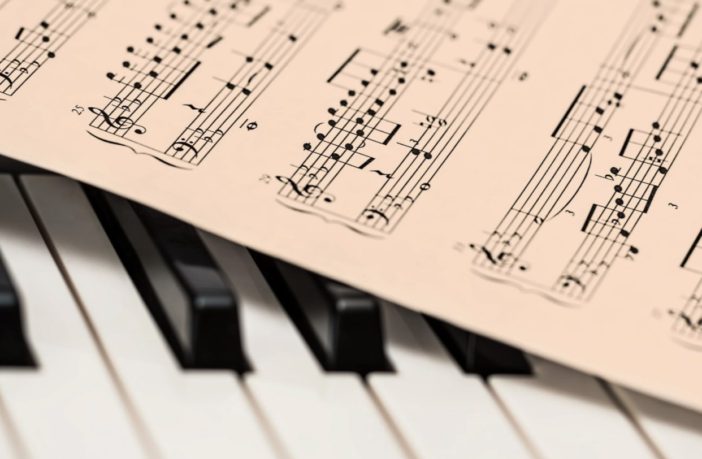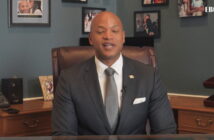By RayJaun Stelly,
Word in Black
Have you noticed the atmosphere is different when you’re at a high school football or basketball game? The aesthetic of hearing a band play in such a way that makes fans get out of their seats to dance, or get players and coaches riled up to go out on the field or the court and win a game.
Unfortunately, the number of bands and bandmembers in Seattle Public Schools has diminished in recent years. Gone are the days of bands from local high schools — with the exception of Garfield, Roosevelt and Ballard — filling gyms with music during basketball games and taking center field during halftime of football games. This is due, in large part, because the music ‘pipeline’ from elementary to middle onto high school is limited, since most lower grade level schools do not have sufficient music programs to feed into local high schools. As a result, it has led to a noticeable absence of bands performing at football and basketball games during warmups, halftime, or timeouts.
Many music lovers/advocates will tell you that it is imperative for all schools to be afforded the opportunity and funding from the state to build music programs from the ground up, therefore allowing students and teachers who are ready to learn and teach the art of music to be a part of something that is globally loved by everyone.
Music is something that helps people get through the best and worst times of their lives, helps provide a way for some to take care of themselves and their families. It also is a way to keep kids active and away from things that could potentially get them in a world full of trouble.
For others, music is a voice for those who may feel as if they are not being heard, but nonetheless the art has produced some of the greatest artists we’ve ever seen, known, or listened to, which is why it’s hard to fathom how it’s not a priority when it comes to our local, inner-city public school system.
According to education professionals who specialize in music, in order to have a successful and sustainable district wide music program the resources and emphasis on music needs to start at the elementary school level. It is there where you can expose and teach a much larger pool of students the basics of music — finger placement, how to establish a breathing or blowing pattern while playing their choice of instrument, and more importantly teaching them how to read and comprehend the music that’s being played – and help them develop a love for music before they get caught up in the stigmas of playing an instrument that can present themselves in middle and high school.
When speaking with a Seattle Public Schools music teacher she expressed, “fourth and fifth grade should be the starting point for students to start playing music, therefore continuing throughout middle school then onto high school.”
She also added that, “retaining staff in the music program is important, you must have a demand to keep the staff and have a teacher who really knows what they’re doing in order to attract students. Our program has potential to grow but I think you have to be somewhere long enough to build those relationships and trust with these students.”
Part of the problem is funding. Due to the lack of sufficient and sustainable funding from the state, many school districts lack the funding necessary to build and sustain a viable music program, especially at the elementary school level, because they don’t have the budget for it. In addition, many schools either don’t have a teacher, instruments for students, or parents who want their kids to participate.
Most schools in the northern part of Seattle tend to get very little in regard to musical funding unless they’ve raised the money on their own. Schools in the South end of the district may have a budget between $1,500 to $2,000, but don’t have the ability to fundraise beyond what is necessary to support the core education needs of the school.
“Kids used to start [playing music]in elementary school, then play in middle school, and go on to play throughout high school,” said Ted Howard, Assistant Superintendent of SPS and former principal at Garfield High School. “A lot of these schools [elementary and middle schools]do not have programs and don’t have it in their budget due to budget cuts by the state.”
“They [school districts in general]have to cut music programs, and these cuts have had an impact on the engagement of our students,” continued Howard. “We cannot expect parents/kids to just figure out patterns without having multiple experiences. Social media is meeting a need, but it cannot replace things such as music and writing? What engages students in schools are the electives that are provided, such as music, where students get a chance to set goals, be creative, and explore.”
While many students have an interest in music, there appears to be a disconnect between being a musician and being an “artist.” Many young people today want to sing, write and produce music, but don’t understand, through no fault of their own, the fundamentals of music and being a musician. This can lead to the limited participation of students in school music programs, and parents demanding and supporting that music be included in school curriculums.
Katie Lenoue, a music teacher at Rainier Beach High School and WMEA Outstanding Educator of the Year for the Elliot Bay Region, understands what’s needed to build up successful music program, and says that support within the building and the community are vital to the resurgence of music programs in the area.
“I know for me, teaching internationally for 13 years, it was a new culture for me at Rainier Beach, it took me a year to adapt and fit into that,” says Lenoue. “Feeling supported is key and I feel that support at Rainier Beach, my administration is great.”
While it is widely understood that reading, writing, mathematics, and science are very important, but it must also be noted that students deserve to have the opportunity to engage in extracurricular activities beyond athletics, and schools should be providing that outlet for them. Many schools are making a shift from just the basics of Science, Technology, Engineering and Mathematics (STEM) and have made an effort to incorporate the arts (STEAM). However, many fear that without proper support and funding that these efforts will eventually lose “steam” and fade away.
“We knew music would impact kids but [funding issues have forced some school districts]to take that away,” says Howard. “They’ll say it’s independently up to each school to do it themselves. Funding plays a huge part and so does leadership [and advocacy].”
“[Right now], we’re dealing with the consequences of decisions that were made many years ago,” continued Howard. “We’re no longer in a position to develop young talent the way that we used to, and as it relates to schools that currently have music programs, unfortunately they’re just taking kids who already know how to play instruments onto the next level.”
Help us Continue to tell OUR Story and join the AFRO family as a member –subscribers are now members! Join here!



